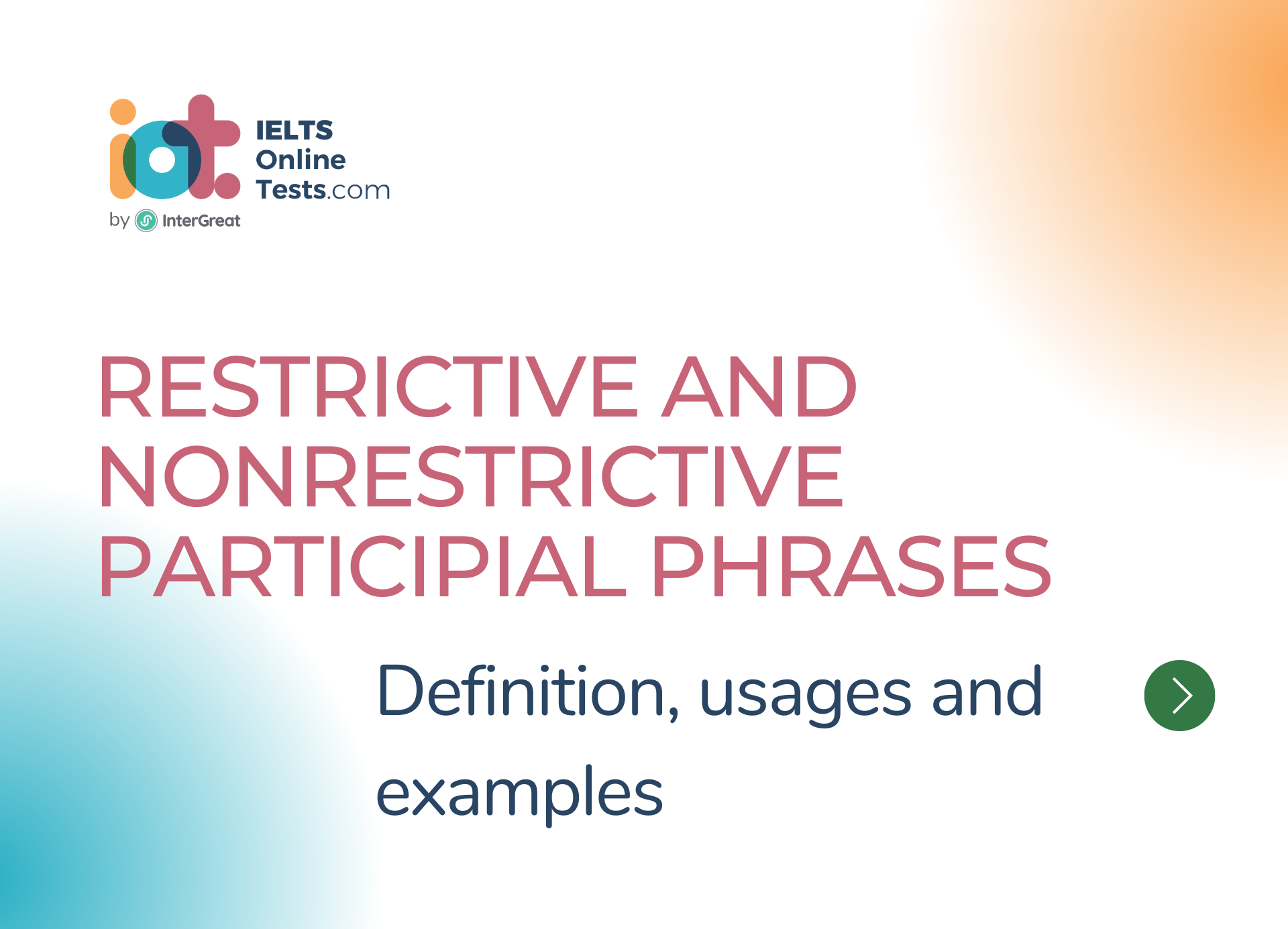
Restrictive and Nonrestrictive Participial Phrases
Restrictive and nonrestrictive participial phrases are two types of participial phrases that provide additional information about a noun or pronoun.
Here's more information about each:
Restrictive Participial Phrases:
- Restrictive participial phrases provide essential information about the noun or pronoun they modify. They limit or restrict the meaning of the noun or pronoun.
- They are not set off by commas and are necessary for the sentence's meaning.
- Examples:
- "The dog chasing its tail is playful." (The participial phrase "chasing its tail" restricts the meaning of the noun "dog" and is essential to understand which dog is being referred to.)
- "The book written by Jane is on the shelf." (The participial phrase "written by Jane" restricts the meaning of the noun "book" and specifies which book is being referred to.)
Nonrestrictive Participial Phrases:
- Nonrestrictive participial phrases provide additional, nonessential information about the noun or pronoun. They add descriptive details but do not change the core meaning of the sentence.
- They are set off by commas and can be removed from the sentence without affecting its basic meaning.
- Examples:
- "The dog, wagging its tail, approached the children." (The participial phrase "wagging its tail" provides additional information but is not necessary to understand which dog is being referred to.)
- "The book, written by a famous author, received critical acclaim." (The participial phrase "written by a famous author" adds extra detail but does not change the core meaning of the sentence.)
It's important to distinguish between restrictive and nonrestrictive participial phrases to ensure that the intended meaning of the sentence is clear. Restrictive participial phrases are essential to understand the noun or pronoun being modified, while nonrestrictive participial phrases provide additional, nonessential information. Proper punctuation, such as commas, is crucial for indicating whether a participial phrase is restrictive or nonrestrictive.




